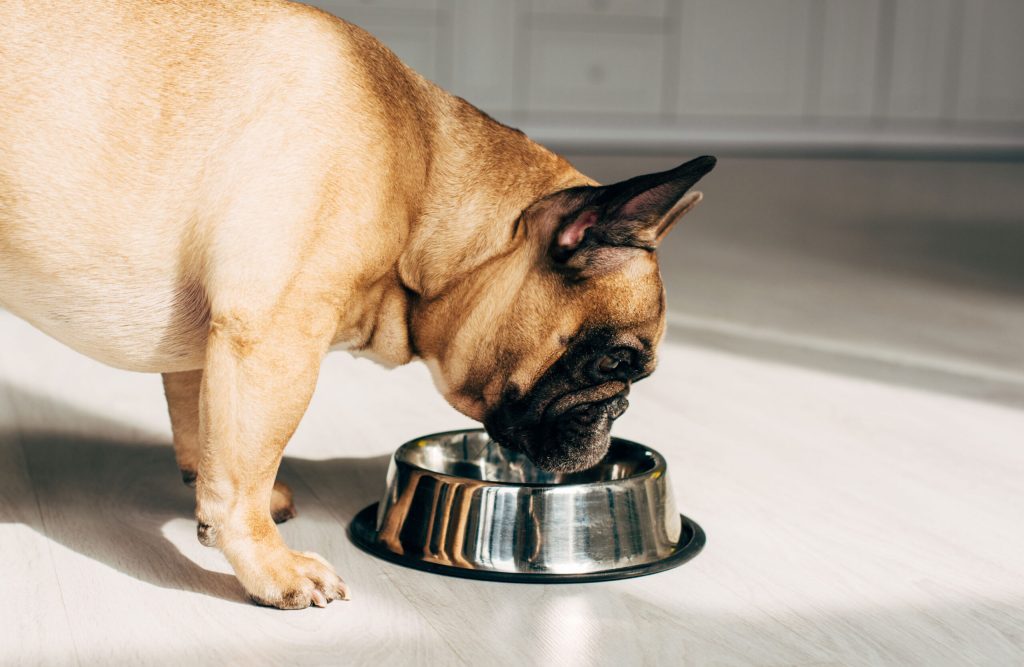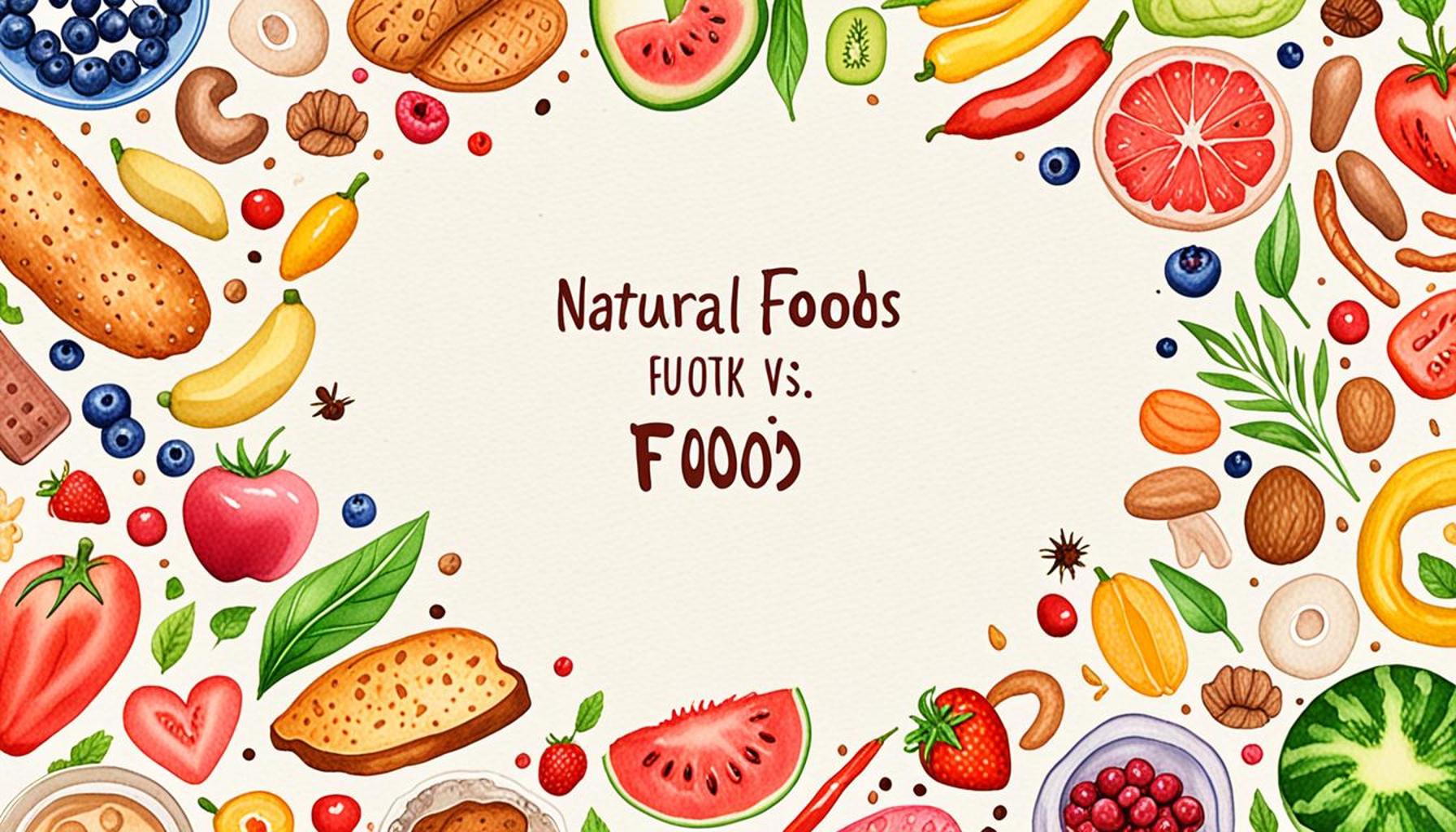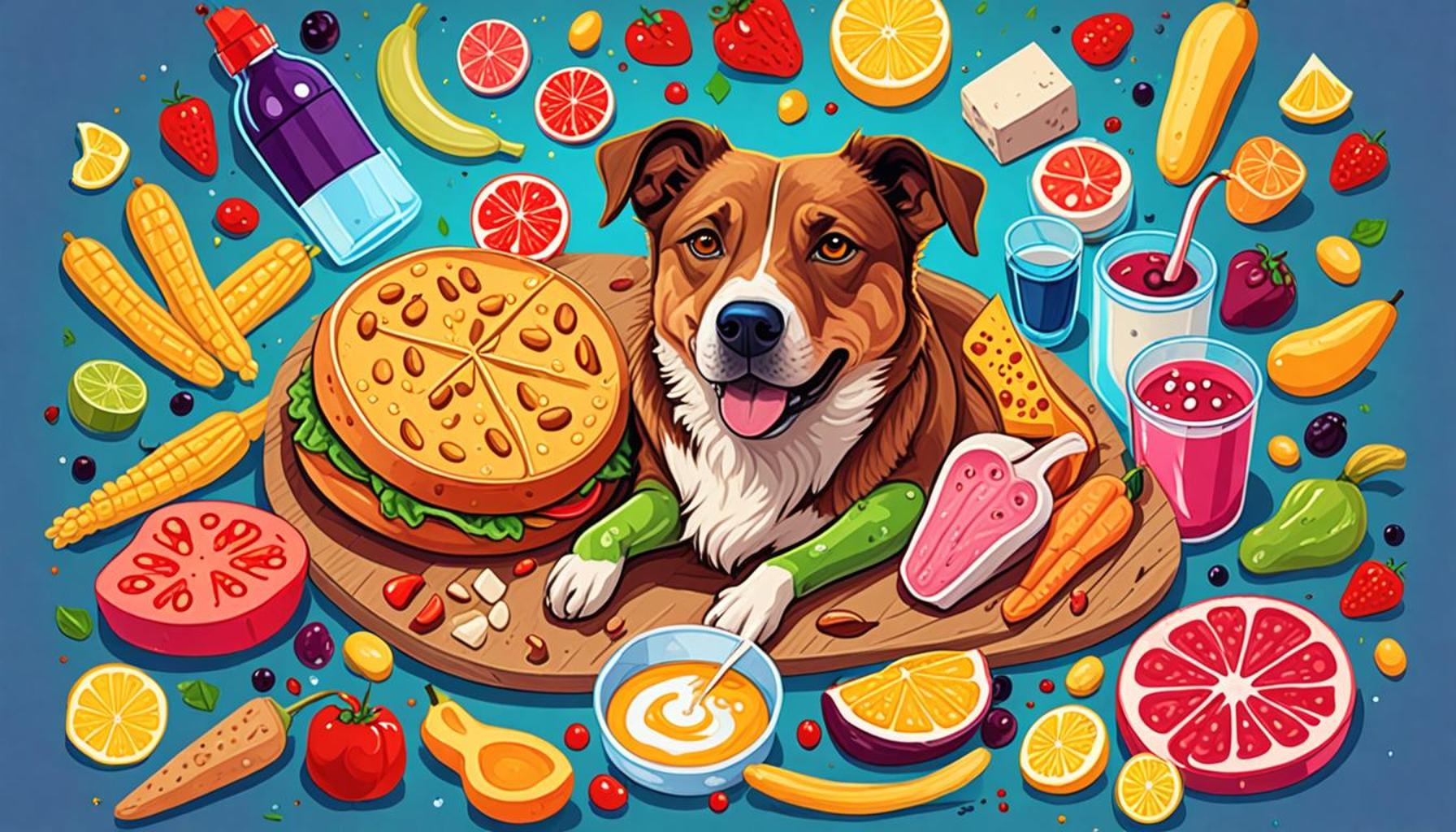The Impact of Exercise on the Nutrition of Pets

Understanding the Dynamics of Exercise and Nutrition in Pets
Every pet owner wants the best for their furry friends. Understanding the link between exercise and nutrition can drastically improve your pet’s quality of life. As with humans, pets thrive on a holistic approach that combines proper nutrition with adequate physical activity. Let’s unpack how these two fundamental aspects of pet care interact and influence one another.
Regular physical activity does not just keep your pet fit; it directly influences their nutritional requirements. For instance, weight management is a primary concern for many pet owners. Exercise helps maintain a healthy weight, which is critical in reducing the risk of obesity-related diseases such as diabetes, arthritis, and heart conditions. According to recent studies, approximately 50% of U.S. dogs and cats are overweight, underscoring the significance of integrating exercise into their daily routine.
Moreover, engaging in regular physical activities enhances digestive health. Active pets typically experience improved digestion and nutrient absorption, which means their bodies better utilize the food provided to them. For example, dogs that are taken for daily walks are less likely to suffer from gastrointestinal issues compared to less active counterparts.
The impact of exercise extends beyond physical wellness to include mood and behavior. Pets that engage in regular playtime or structured exercise often exhibit improved mental health, leading to positive changes in their eating habits. Studies indicate that active cats and dogs show reduced anxiety and destructive behaviors, which can often arise from boredom or inactivity.
When considering your pet’s lifestyle, aligning their diet with their activity level is vital. An under-exercised pet may require fewer calories, while an active pet, especially one that participates in rigorous play or agility training, might need food richer in protein and healthy fats. This brings us to age, breed, and health status—key factors that influence a pet’s dietary needs.

- Age: Young pets (puppies and kittens) have higher energy requirements due to their growth and development needs. Conversely, older pets may have different nutritional needs that take into account their slower metabolism.
- Breed: Certain breeds, such as Labrador Retrievers, tend to be more active and may require a more calorie-dense diet compared to more sedentary breeds like Bulldogs.
- Health Status: Pets with health conditions, such as hypothyroidism, may have specific dietary restrictions, necessitating a careful evaluation of their food in relation to their physical activity.
By recognizing how exercise influences pet nutrition, you can cultivate a balanced lifestyle for your beloved companions. A mixture of engaging activities and tailored nutrition can lead to a happier, healthier pet. As a pet owner, educating yourself about these dynamics can empower you to make better decisions for your furry family members, ultimately enhancing their well-being.
This article aims to provide deeper insights into these vital connections, encouraging readers to reflect on their pets’ exercise regimes and nutritional habits. A thoughtful approach to both can yield significant rewards, fostering not just longevity, but a fulfilling life for your pets.
LEARN MORE: Click here for vital insights
The Interplay of Physical Activity and Dietary Needs
Understanding the profound connection between exercise and nutrition is essential for pet owners aiming to optimize the health and happiness of their companions. A pet’s activity level not only determines its immediate caloric needs but also influences the type and quality of nutrients they should be consuming. When exercise levels increase, so do the demands for energy, which can make a significant impact on a pet’s overall well-being.
Additionally, pet owners must be keenly aware that the relationship between exercise and nutrition extends well beyond basic caloric intake. A dog or cat that engages in frequent and vigorous exercise may require a diet that is not just higher in calories but also richer in nutrients. This is especially true for proteins, vitamins, and minerals that support muscle recovery and overall health. Neglecting to adjust a pet’s diet in accordance with their exercise patterns can lead to deficiencies that may affect their vitality.
Pet nutrition is further influenced by factors such as exercise intensity and duration. For example, a pet that enjoys long runs or intensive play requires different dietary support compared to one that opts for leisurely strolls. This variance highlights the importance of tailoring a pet’s feeding schedule and portions based on their daily activity levels. A careful assessment of their exercise regimen can guide pet owners in striking the right balance in their nutrition plans.
Key Nutritional Adjustments for Active Pets
To cater to their pets’ increasing nutritional demands, owners should consider several adjustments based on exercise intensity:
- Protein: Active pets may benefit from higher protein content to support muscle repair and growth. Look for dog or cat foods that list high-quality animal proteins as the first ingredients.
- Healthy Fats: Incorporate healthy fats such as Omega-3 and Omega-6 fatty acids, which not only provide energy but also support skin and coat health, particularly for those engaged in rigorous activities.
- Hydration: With increased physical activity, it’s vital to ensure that pets are properly hydrated. Sometimes pets may need electrolyte balance, so consider their fluid intake, especially after extensive exercise periods.
- Vitamins and Minerals: Essential nutrients like calcium and phosphorus are crucial in keeping bones strong; ensure that a pet’s diet can support their skeletal health, especially for larger breed dogs that are more prone to joint problems.
By comprehensively understanding these nutritional adjustments, pet owners can help ensure their furry friends lead longer, healthier lives. Monitoring both exercise and diet is paramount to fostering a fulfilling environment where pets can thrive mentally and physically.
As we delve deeper into the importance of aligning exercise with nutrition, we can uncover practical strategies that pet owners can adopt to elevate their pets’ quality of life. This knowledge empowers pet owners to take proactive steps toward achieving optimal pet health through a holistic approach.
The Impact of Exercise on the Nutrition of Pets
As pet owners seek to improve the health and wellbeing of their furry friends, understanding the interrelationship between exercise and nutrition has become increasingly important. Pets that engage in regular physical activity often exhibit better overall health, which positively influences their nutritional needs and dietary choices.
Exercise doesn’t just burn calories; it also enhances metabolic processes, thereby improving the way pets absorb and utilize nutrients from their food. This means that active pets may require a different balance of proteins, fats, and carbohydrates in their diets compared to their more sedentary counterparts. For example, dogs and cats that regularly partake in vigorous activities may benefit from higher protein levels to maintain muscle mass and overall energy levels.
Moreover, exercise helps in regulating a pet’s weight, which is crucial for their health. Maintaining a healthy weight can prevent numerous health issues such as obesity, diabetes, and joint problems. The appropriate diet, tailored to the level of exercise, will further support weight management and well-being.
To illustrate the advantages of combining exercise with proper nutrition, we can examine the dietary considerations for pets engaged in various levels of physical activity. Here’s a helpful table to succinctly outline these points.
| Nutrition Factor | Impact of Exercise |
|---|---|
| Energy Requirements | Increased caloric needs for active pets, promoting better energy levels. |
| Protein Intake | Supports muscle maintenance and recovery post-exercise. |
| Hydration | Increased need for water intake, especially after vigorous activities. |
By recognizing how exercise influences pet nutrition, owners can make informed decisions to support a healthier lifestyle for their pets. Further research into specific dietary modifications based on exercise levels can ultimately lead to better health outcomes for pets across the board.
DISCOVER MORE: Click here to learn how to keep your pet healthy
Understanding Nutritional Timing and Composition
In addition to modifying the nutritional content of a pet’s diet in response to exercise, pet owners must also focus on nutritional timing — when and how to feed their furry companions. Proper meal timing can enhance performance, recovery, and overall health, particularly for active pets. Thinking strategically about meal schedules around exercise times can play a crucial role in optimizing a pet’s nutrition and energy levels.
For instance, feeding pets before they engage in intense activities can provide the energy they need to perform at their best. However, it’s essential to determine the right amount of time for digestion, as feeding a pet immediately before exercise can lead to discomfort or digestive issues. Generally, feeding 30 minutes to two hours before exercise is advisable, depending on the individual pet’s tolerance.
The Role of Recovery Nutrition
Post-exercise nutrition is equally pivotal in ensuring that pets recover effectively. After physical activities, a pet’s body depletes its glycogen stores and requires a refill to promote muscle recovery. A recovery meal that is rich in carbohydrates, along with an adequate protein source, can help restore energy levels and initiate muscle repair. Foods that contain high-quality protein and easily digestible carbohydrates are often recommended following vigorous workouts.
While commercial pet food options frequently provide the necessary macronutrients, pet owners looking for a more hands-on approach can explore home-cooked meals tailored to their pets’ specific needs. Ingredients such as brown rice, pumpkin, and chicken—not to mention a variety of vegetables—can serve as nourishing recovery meals for pets.
Monitoring Weight and Body Condition
In conjunction with assessing nutritional adjustments and meal timing, pet owners should closely monitor their pets’ weight and body condition to ensure that their nutrition aligns with their exercise efforts. An overweight pet is at risk for developing a range of health concerns, including diabetes and joint issues. Regular body condition scoring—an assessment of a pet’s muscle and fat distribution—can inform whether dietary changes are necessary to align with activity levels.
Many veterinarians recommend a targeted approach to weight management, advising pet owners to track both food intake and exercise frequency regularly. Utilizing pet-friendly mobile applications can simplify this process, allowing owners to input details about their pet’s diet, exercise logs, and changes in weight. Regular communication with a veterinarian can also guide owners in outlining weight goals and adjusting their pet’s nutritional plans.
Understanding Special Dietary Needs
Diverse breeds and individual pets can have unique dietary requirements linked to their genetic disposition, age, and health conditions. For example, older pets or those undergoing rehabilitation from surgery may need a specialized diet to aid with recovery. Similarly, an active working dog requires high-calorie, nutrient-dense food to sustain their rigorous daily routines. Understanding these specific needs can help pet owners make informed nutritional choices that complement their pet’s exercise habits.
Finding the right nutritional balance can be a journey and requires ongoing research and adaptation. As pet owners become better acquainted with their companions’ needs, they can foster adaptable feeding practices and exercise routines. This knowledge will ultimately lead to healthier, happier pets, capable of enjoying their active lifestyles. Encouraging pet owners to remain proactive in assessing their furry friends’ nutrition will pave the way for a comprehensive understanding of the essential links between exercise and nutrition.
DISCOVER MORE: Click here to learn how pet adoption can enhance your mental well-being
Conclusion: The Vital Connection Between Exercise and Pet Nutrition
As we’ve explored, the intricate relationship between exercise and nutrition in pets is undeniable. Timely and well-balanced meals, tailored to meet your pet’s specific energy demands, play an essential role in their overall health and athletic performance. The importance of understanding nutritional timing cannot be overstated—ensuring that pets receive nourishment before and after exercise can significantly enhance their recovery and physical capabilities.
Moreover, monitoring your pet’s weight and body condition is crucial in adjusting dietary needs in line with their activity levels. This vigilant approach helps prevent the adverse effects of obesity and supports a long, active life. Additionally, recognizing individual dietary needs based on breed, age, or existing health conditions allows pet owners to provide tailored nutrition that maintains their furry friends in peak condition.
The journey towards achieving a balanced lifestyle for pets requires ongoing education, adaptability, and a proactive mindset. By staying informed about the latest research and recommendations, pet owners can implement effective feeding and exercise regimens that promote wellness. Ultimately, the key takeaway is simple: integrating mindful nutrition with regular exercise not only enhances a pet’s quality of life but also strengthens the bond between pet and owner. This holistic approach will invariably lead to a fulfilling life for pets, ensuring they thrive in both health and happiness.


